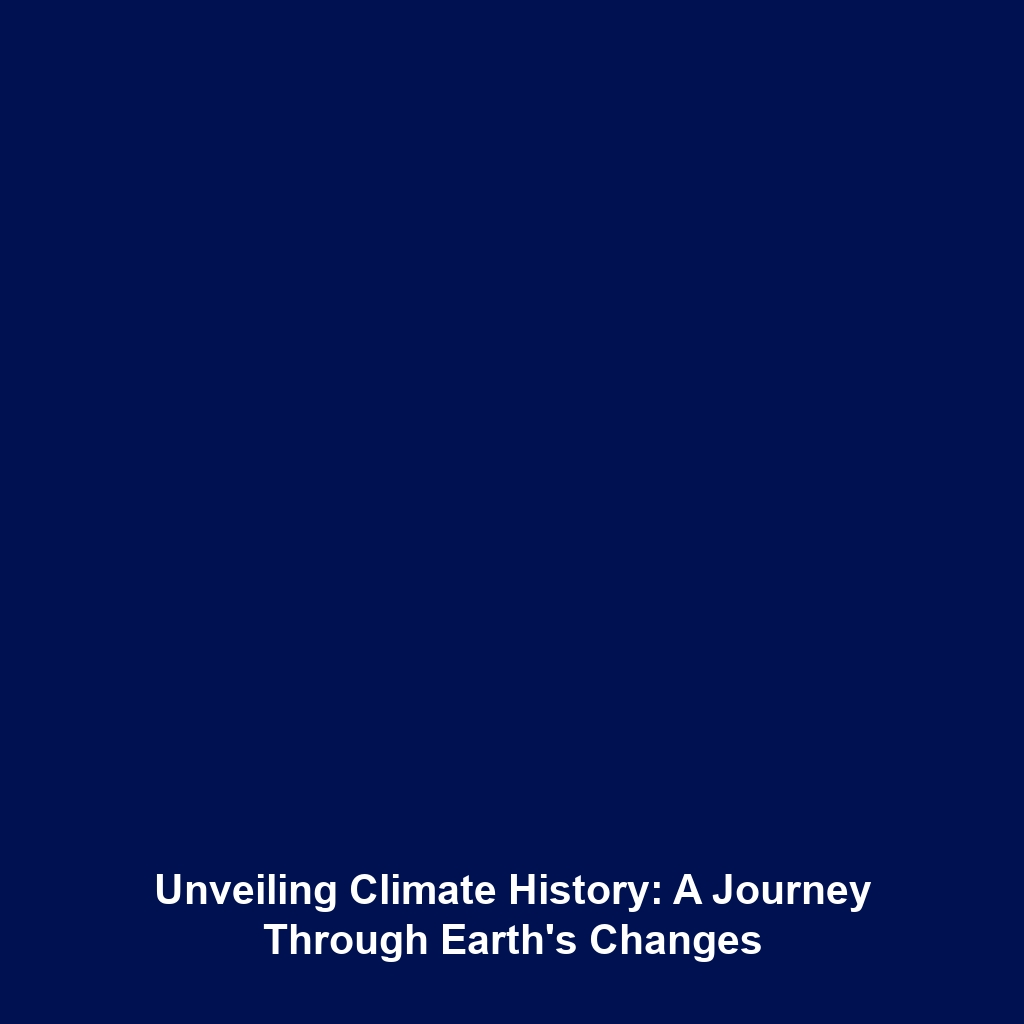Introduction to Climate History
Introduction
Understanding Climate History is paramount as it helps us unravel the intricate interactions between Earth’s climatic conditions and its ecosystems throughout time. By examining historical climate patterns, scientists can predict future climate changes and their potential impacts. This article provides a foundational overview of Introduction to Climate History, illuminating its significance in understanding our planet’s environmental evolution and informing present-day climate-related decisions.
Key Concepts
Definition of Climate History
The field of Climate History studies the changes in climate over geological timescales. It incorporates evidence from ice cores, tree rings, sediment records, and historical data to map out how climate has influenced human societies and natural ecosystems.
Important Principles
- Holocene Climate Transitions: Understanding the shift from the last Ice Age to the current interglacial period.
- Climate Modeling: Utilizing mathematical models to simulate atmospheric conditions and predict future scenarios.
- Human Impact: Exploring how civilization has altered climatic conditions through activities such as deforestation, agriculture, and industrialization.
Applications and Real-World Uses
The Introduction to Climate History serves various practical applications:
- Policy Development: Informed decisions by governments regarding climate change mitigation strategies.
- Urban Planning: Designing climate-resilient infrastructure based on historical climate data.
- Restoration Ecology: Understanding past ecosystems to guide restoration efforts.
Current Challenges
Despite its importance, the field of Introduction to Climate History faces several challenges:
- Data Limitations: Incomplete records from certain geographical areas can hinder comprehensive analyses.
- Interpretation Issues: Differentiating between natural climate variability and anthropogenic influences remains complex.
- Technological Constraints: Limited resources for data collection and analysis can restrict research capabilities.
Future Research and Innovations
Upcoming innovations in Introduction to Climate History are poised to transform the understanding of climate dynamics:
- Advanced Climate Models: Integration of machine learning to enhance predictive accuracy.
- New Data Acquisition Techniques: Utilization of satellite technology for more extensive climatic data collection.
- Interdisciplinary Approaches: Collaborations among historians, climatologists, and ecologists to provide holistic insights.
Conclusion
The Introduction to Climate History lays the groundwork for understanding the historical patterns of climate change and its implications. Not only is it essential for anticipating future climatic scenarios, but it also informs policy and practical applications today. For further exploration of related topics, consider reading about the impact of climate change on ecosystems or strategies for climate adaptation.
